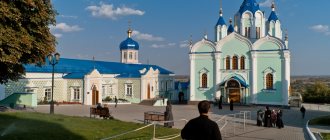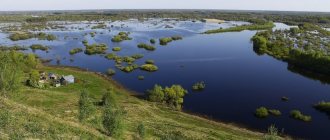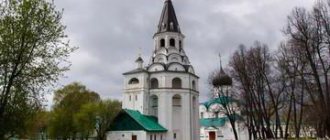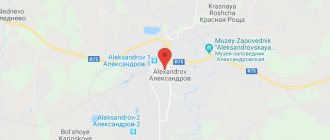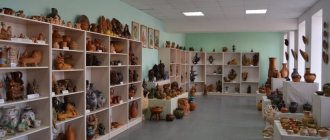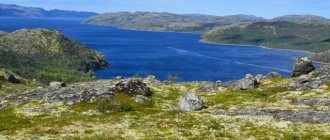What holiday is it today?
December 16, 2021, Thursday
Today are holidays, events: Events that happened on December 16 in the world, in different years Tomorrow: Day of Strategic Missile Forces Day of Employees of the State Courier Service Memorable date in the military history of Russia: Capture of the Ochakov fortress in 1788
Today is the Orthodox holiday of the Prophet Zephaniah. Reverend Savva of Storozhevsky, Zvenigorod. Martyr Angelis... Tomorrow: Great Martyr Barbara and Martyr Juliania of Iliopolis. Venerable John of Damascus...
Today is a national holiday: Day of World Silence and Silence... Tomorrow: Barbarian Day...
Seasons
Seasons, four periods of the year (spring, summer, autumn and winter) characterized by certain average temperatures. The period during which the Sun passes through one of these sectors is called the season. Spring in the Northern Hemisphere and autumn in the Southern Hemisphere begin when the Sun passes through the initial circle of declination and its right ascension is 0° (vernal equinox). Summer in the Northern Hemisphere and winter in the Southern Hemisphere occur when the sun's right ascension is 90° (summer solstice). Autumn in the Northern Hemisphere and spring in the Southern Hemisphere begin when the sun's right ascension is 180° (autumnal equinox). The beginning of winter in the Northern Hemisphere and summer in the Southern Hemisphere is considered to be the winter solstice, when the direct ascension of the Sun is 270°... Next: Seasons. Russian folk calendar. Monthly words...
Mushrooms of the Vladimir region
Of the edible mushrooms and mushrooms that are edible subject to special preparation measures, the following are found in the Vladimir region: saffron milk caps, boletus mushrooms, boletus mushrooms, porcini mushrooms, aspen mushrooms, chanterelles, russula, fly mushrooms, champignons, boletus mushrooms, and hill mushrooms.
The mushroom season begins in early spring, when the first morels and honey mushrooms grow. In summer, porcini mushrooms, russula, and fly mushrooms appear. From the end of summer, mushroom pickers' baskets begin to fill with boletuses and saffron milk caps.
Among the poisonous mushrooms common in this area are: pale toadstools, false mushrooms, and red fly agaric. The special danger of these mushrooms lies in the fact that in appearance they are doubles of edible mushrooms, so when going into the forest, it is important to know their distinctive features.
Folk calendar about every day
Every day one season always replaces another and this determines a person’s way of life. In connection with this, a folk calendar was formed in which there were practically no nameless, unmarked days. Every day was special, had its own purpose. All this was determined by climate conditions and astrological phenomena.
A calendar is a system for counting periods of time. The first calendars arose a long time ago, in ancient times, because there was a need to measure time. The word calendar comes from the Latin words caleo - to proclaim and calendarium - debt book. This is due to the fact that in Ancient Rome the beginning of each month was especially proclaimed, and because it was customary to pay debts on the first day of the month. Different peoples counted time differently. Some calendars are based on the changing phases of the moon - lunar calendars; in others - the change of seasons - sunny; in others, the length of the year was coordinated with the change of seasons, and the counting of months was associated with the phases of the Moon. Such calendars are called lunisolar.
In Rus', the calendar was called a monthly calendar. Every day, the month book covered the entire year of peasant life, “describing” day by day, month after month, where each day had its own holidays or weekdays, customs and superstitions, traditions and rituals, natural signs and phenomena. The cyclical nature of the calendar is reminiscent of human life, where spring is youth, summer is heyday, autumn is the time of harvesting fruits (it’s good if there are some, otherwise you can live your life without collecting fruits), winter is the time of wisdom and peace. This cyclicality and rhythm determined the way of life of the farmer. The folk calendar was an agricultural calendar, which was reflected in the names of the months, folk signs, rituals and customs. Even the determination of the timing and duration of the seasons is associated with real climatic conditions. Hence the discrepancy between the names of the months in different areas... Next: Folk calendar...
Navigation
The Vladimir region is one of the oldest historical and artistic centers of the Russian land. The territories that it includes have long formed the core of the Vladimir-Suzdal principality, and since the end of the 18th century - the Vladimir province.
The Grand Duchy of Vladimir (1157 - 1362) was formed in connection with the transfer by Grand Duke Andrei Bogolyubsky of the capital of the Rostov-Suzdal Principality to the city of Vladimir on Klyazma. There are several points of view on the founding date of the city. According to one version, it was founded by Prince Vladimir Svyatoslavich in 990, according to another - in 1108 by Prince Vladimir Monomakh. Under Prince Andrei Bogolyubsky and his successors, the city flourished.
In the second half of the 12th - early 13th centuries, the Grand Duchy of Vladimir was the largest economic, political and cultural center of Rus'. The transfer of the political center of Rus' to Vladimir played a big role in the formation of the Great Russian people and the Russian nation. At the beginning of the 13th century, the Tatar-Mongol invasion dealt an irreparable blow to the economic and political power of the principality. In 1238, Vladimir, Pereslavl-Zalessky, Suzdal, and Yuryev-Polsky were devastated.
The culture of the Grand Duchy of Vladimir left a deep mark on the history of all North-Eastern Rus'. The Vladimir architectural school influenced the stone architecture of Moscow and other Russian cities. Among the outstanding monuments of Vladimir-Suzdal architecture of the 12th-13th centuries are the white stone Assumption and Demetrius Cathedrals, the Golden Gate, and the Church of the Intercession on the Nerl, which have survived to this day.
Since the time of Ivan Kalita, the role of Vladimir as a capital city has ceased. However, the political and cultural traditions of the Grand Duchy of Vladimir were adopted by the Grand Duchy of Moscow during the formation of the Russian centralized state. The process of annexing the Vladimir lands to Moscow actually ended in the 16th century under Ivan the Terrible. Around this time, it was on the territory of the Vladimir lands that the institution of itinerant small traders - Ofeni - emerged, and the invented conventional Ofenian or Suzdal language was formed in which they communicated. In addition to the fact that in conditions of a poorly developed trade network and poor roads, the ofeni played a significant role in supplying the population with goods, while moving over long distances, they also performed a communicative function.
In 1778, the Vladimir province from 13 counties, in the same year it was transformed into a governorship, which included 14 counties: Alexandrovsky, Vladimirsky, Gorokhovetsky, Vyaznikovsky, Kirzhachsky, Kovrovsky, Melenkovsky, Muromsky, Pereslavsky, Pokrovsky, Sudogodsky, Suzdal, Shuisky, Yuryev-Polsky. After the accession of Paul I, the governorships were liquidated, and the Vladimir governorship was again transformed into a province.
The Vladimir province was one of the most industrially developed provinces in the European part of Russia. Since the 17th century, textile production has been developing there (manufactories in Ivanovo-Voznesensk, Shuya, Vyazniki, Murom, etc.). The ironworks of the Botashevs operated in the Melenkovsky district. In the second half of the 18th century, the Maltsov glass factories were founded in Sudogodsky district (now Gus-Khrustalny district). A feature of the development of the economy of the Vladimir province was that most industrial establishments were located in villages and settlements.
Handicrafts have become widespread in the province. Icon painting has been known since the end of the 17th century (Shuya, Palekh, Mstera). Vladimir and Suzdal masons, Pokrovsky and Gorokhovets carpenters received all-Russian fame.
At the end of the 19th century, the area of the province was 42.8 thousand square meters. versts, population - 1,570,000 people, there were over 1,350 factories, about 150 thousand workers. The Vladimir province is one of the centers of textile production; 31 percent of the cotton fabrics produced in Russia are produced here.
After the revolutionary events of 1917 and the civil war, the province remained independent until the administrative reform of 1929, when the Ivanovo industrial region was formed, which included most of the Vladimir province. The remaining territories were included in the Moscow and Nizhny Novgorod regions.
With the beginning of industrialization, major changes occurred in the economy; enterprises in the textile, engineering, instrument-making and glass industries were built.
During the Great Patriotic War, defense enterprises and, first of all, the Kovrov plant, where the famous design bureau of gunsmiths headed by V.A. Degtyarev operated, made a great contribution to the victory.
On August 14, 1944, the Vladimir region from 23 districts of the Gorky, Ivanovo and Moscow regions. Subsequently, after several administrative reforms, 16 existing districts were formed.
In 1945, the first stage of the Vladimir Tractor Plant was put into operation. In the 1950s - 70s, a number of large industrial enterprises were built and reconstructed, the Vladimir region became one of the most industrially developed regions of Russia.
Fishing calendar for every day
The fishing calendar should not be taken as an absolutely indisputable truth. Fish biting is greatly influenced by a whole range of natural factors, as well as the influence on the nature of man himself. You must not forget that the fish’s bite depends and is determined not only by the calendar dates and biological cycles of their life, reflected in the calendar, but also, no less, by the state of their habitat; the bite also depends on weather conditions: air and water temperatures, cloudiness, wind direction and strength, etc... Next: Fishing calendar...
Transport connection
On the map of the Vladimir region with its districts you can see a well-developed network of railways and roads. They serve the flow of cargo and passengers in three directions of the Trans-Siberian Railway. Part of the region is part of the capital's railway ring.
The satellite map of the Vladimir region shows highways passing through the territory in the direction of:
- Yaroslavl;
- Ryazan;
- Nizhny Novgorod.
The main highways of the region: A108, P72 and P125. There are two branches of oil pipelines running through the region. Vladimir has its own international airport.
Orthodox calendar about every day
Orthodox calendar: Orthodox, Church and Christian holidays.
The church year is an alternation of weekdays and holidays. On weekdays, a person is called to work “by the sweat of his brow to earn his bread.” Holidays are given in order to feel liberation, to rise above the bustle and routine of the world, to feel involved in the highest of worlds, “where there are no illnesses, sorrows and sighs, but endless life.” Since ancient times, holiday cycles have been associated with the seasons. The pagans associated them with the worship of the forces of nature, the cult of which in the Old Testament was replaced by gratitude to the Creator for the universe. And although the connection between holidays and the seasons has not completely lost its power, since God is present in everything, in the plant and animal world, in human works, it nevertheless faded into the background, giving way to a spiritual foundation built on the Sacred Scriptures. The history of Orthodox holidays dates back to the times of the Old Testament. Each of the Orthodox holidays is dedicated to the remembrance of the most important events in the life of Jesus Christ and the Mother of God, as well as the memory of saints... Next: Orthodox calendar...
Lakes of the Vladimir region
There are more than 4 hundred lakes in the region, their total area is 5 thousand hectares. Most of the lakes are shallow, have no drainage, and are quickly overgrown with a layer of peat. The lakes of the region have a variety of shapes: oval, horseshoe-shaped, round. The shores are most often either sandy or marshy. The coastline has simple outlines. Some lakes located in groups are connected by underground drains. Lakes have different origins; there are floodplain, karst, alluvial, and glacial lakes.
The largest lake is Kshara, whose depth is more than 60 meters.
Russian folk calendar for every day
The word “sign” comes from the word “notice”, i.e. observe. As a result of observing what happens around a person every day, he accumulates life experience. This knowledge was passed down from generation to generation, carefully preserved and people trusted it as a sacred book. Many signs have come to us from the depths of centuries without losing their knowledge. Each of us is free to choose: to dismiss all this as an absurd superstition or to take a closer look at the signs and take the centuries-old experience of generations more seriously. Most of us, when taking exams, ask them to scold them, boasting about some kind of good fortune or luck, spit so as not to jinx them or knock on wood, take a detour if a black cat crossed the road, are afraid of the number 13 and much more. And who among us does not have lucky things, numbers? Who has never resorted to the help of fate at least once in their life, who has not believed in secrets? It’s as if everything connected with signs is hidden somewhere deep in our subconscious. Often we remember them mechanically, unconsciously, or just as a joke. But, undoubtedly, the signs contain a lot of accurate knowledge and practical wisdom of our ancestors. They cover all the characteristic, often difficult to perceive, natural phenomena. Signs have preserved a lot of what was in old folk holidays and customs; they help predict the weather, grow crops... Next: Folk signs...
Holiday calendar, dates and events of the year
All state and professional holidays in Russia, including significant World and International holidays, and other equally interesting holidays and events about every day.
The holiday has always kept pace with the history of mankind. Social time can be divided into three types: everyday life (weekdays), weekends and holidays. Everyday life is a series of practices repeated day after day and every day (work). Weekends are regular breaks from the rush of everyday life. It is believed that on weekends a person should restore his strength after working days. Day off, non-working day. A holiday is a day of celebration established in honor or in memory of someone or something. A day or series of days celebrated by the church in memory of a religious event or saint... Next: Calendar...
Soil diversity of the Vladimir region
The following types of soils are found in the region:
fertile dark-colored carbonate, found in the forests of Opole gray forest, found in the same area
turf alluvial, found near the banks of the largest rivers
soddy-podzolic, subdivided into medium loamy, sandy loam and sandy types and found in coniferous and mixed forests
podzolic-bog and bog species, found in the area of the Gorokhovets bogs and Meshchera
It should be noted that soils contain insufficient amounts of boron and sulfur.
Prayer book, Orthodox prayers for every day
Prayer is the most powerful means for healing all illnesses - both physical and mental. Prayers can be laudatory or grateful, petitionary and repentant. If we have offended God, sinned, we must ask Him for forgiveness, that is, repent. Such prayers are called repentant prayers. If everything is fine with us, if we and our loved ones are healthy and prosperous, if we have a place to live, something to wear, something to eat, we must glorify and thank God for this. Such prayers are called praise or thanksgiving. If some misfortune, illness, trouble or need happens, you need to ask God for help. Such prayers are called petitionary... Next: Orthodox prayers...
Zodiac, astrological, eastern calendar. Zodiac signs
In ancient times, to establish the calendar, priests used knowledge of the positions of all the planets. Before the reform of Peter 1, the New Year was celebrated on the Day of the Autumn Equinox. On this day, according to ancient legend, the most peaceful treaty was concluded between the Great Race (ancient Slavs) and the Great Dragon (ancient Chinese) and it was approximately 7518 years ago... For the ancient Slavs, the calendar month corresponded to the lunar cycle from new moon to new moon, taking into account such Thus, the relationship of the entire annual cycle with astronomical and natural phenomena. There was no coherent calendar system. The main natural phenomena are still considered to this day to be the days of the solar equinox and solstice - the Slavic holidays Maslenitsa, Kupala, Ovsen and Kolyada. But during the time of Peter 1, all ancient Slavic calendars were abolished and a new Western European calendar from the Nativity of Christ (Julian calendar) was introduced, while the beginning of the calendar was moved to January 1. The Julian calendar (old style) did not take leap days into account and accumulated one extra day every 128 years. After the October Revolution in 1918, the Gregorian calendar (new style) was introduced in Russia, according to which an amendment of 13 days was introduced. The calendar of the ancient Slavs was based on two planets: the Sun and the Moon. And now they don’t use anything at all. The calendar has become static. There is no such thing as the calendar, it turns out, resting on some planet. Nobody even knows about it. There are just some standard numbers, there are months and holidays. The calendar is based on the Sun and Moon. Why is this so? Because these two luminaries influence the Earth. The Earth revolves around the Sun, and the Moon revolves around the Earth. And these two luminaries create the atmosphere on the planet. From here the calendar is built... Next: Astrological calendar...
Murom is the most ancient city in the region
How to get there: — by train: from the city railway station there is a direct route to Murom; — by bus: from the Vladimir bus station there is a direct route “Vladimir-Murom”, there are also transit flights; — by car: in a southeast direction 145 km (1 hour 30 minutes on the road). Murom is the regional center of the Murom region, located on the Oka River, and is considered one of the oldest cities not only in the region, but also in the Russian Federation. Murom is mentioned in the chronicles in 862, it was built earlier, but the exact date of its foundation cannot be given. In the 11th century the settlement was the main city of the Murom-Ryazan, and after the collapse of the Murom principality. In the 13th century. There is no information about the city in the chronicles. And he returned to history in the middle of the 14th century, and at the end of the century he was annexed to the Moscow principality. From then on, Murom became a craft center: tanners, shoemakers, blacksmiths - everyone glorified the city. It has been part of the Vladimir region since 1877. In the 19th century. is successfully developing economically, there is an iron foundry and a cotton weaving factory operating here. Soviet times became terrible for monuments of church architecture: many cathedrals and churches were closed and ruined, but with the beginning of a new era in the life of the country, churches were restored. Now Murom is a very cozy, well-maintained city, although it does not play an important role, but retains its originality. There are many attractions here that visitors will definitely enjoy. In Murom you can visit the churches of Cosma and Damian, the Smolensk Icon of the Mother of God, and the monasteries of the Savior-Preobrazhensky, Blagoveshchensky and Holy Trinity. These buildings date back to the 16th-19th centuries. Many will question why such an ancient city only had buildings from such a limited period. The answer is simple: during the horde’s raid, the city was practically destroyed, after which it took a very long time to recover. In between walks around the city and trips to church, you should definitely look into the Murom Historical and Art Museum, the building of which is in itself an architectural monument. The exposition of the museum institution presents exhibits of the Murom Scientific Society, as well as paintings by famous artists (K.P. Bryullov, I.I. Shishkin, V.I. Surikov). It is open every day - from 10:00 to 17:00, on Mondays there are history departments, and on Tuesdays there is an art gallery. Monuments and monuments are scattered throughout the city - to Peter and Fevronia of Murom, Ilya Muromets, V.I. Lenin, radio electronics scientist V.K. Zvorykin. If you just want to take a walk, tired of contemplating churches and temples, then it is better to head to the embankment of the Oka River, which is adjacent to the Oka Garden. A long time ago, on the site of this park complex there was an old wooden Kremlin, which was dismantled in the 18th century. due to disrepair. But the city residents did not want to abandon such a picturesque place, having planted a small garden here. Now it is considered a city park of culture and recreation. The embankment offers a wonderful view of the river; locals love to walk here and enjoy the beauty that awaits them. You need to go to Murom for calm, leisurely walks around the city, interspersed with visits to museums and architectural monuments.
Kovrov is a city where carpets are not produced
How to get there: - by train - from the city railway station, transit flights to Nizhny Novgorod, Kirov, Novy Urengoy, Chelyabinsk, Kemerovo; - by bus - from the Vladimir bus station there is a direct route "Vladimir-Kovrov", there are also transit flights; — by car – in a northeast direction 80 km (1 hour 10 minutes on the road). The city of Kovrov is on everyone’s lips: everyone imagines that there must be a factory here that produces beautiful carpets and rugs. But, unfortunately or fortunately, the city does not live up to its name. Kovrov's main task is defense and heavy industry. Kovrov is the regional center of the Kovrovsky district, located on the Klyazma River. For the first time, a settlement on the site of the modern city was mentioned in the 12th century; it was founded by Yuri Dolgoruky and called the village of Elifanovka. Another prince renamed the village the village of Rozhdestvenskoye, since here he stopped to wait out the storm, and it happened before Christmas. In the 16th century The village belonged to the Kovrov princes and was renamed - hence the modern name. The settlement received city status in the 17th century, and in the 18th century. Kovrov became a district center. The first factories and plants appeared in the middle of the 19th century, and in Soviet times the tradition was continued: heavy industry enterprises and the defense industry were located here. During the Second World War, automatic weapons for the Soviet troops, anti-tank and machine gun weapons were produced here. After the war, a plant for the production of missile weapons was opened, and currently the focus on defense and military affairs remains. Despite the industrial nature of the city, it is worth visiting Kovrov and strolling its streets. Firstly, there are cathedrals here - the Transfiguration Cathedral and the Nativity of Christ Cathedral, both majestic and beautiful. Secondly, Klyazminsky Gorodok is not far from the central part of the regional center. In this place, Prince Yuri Dolgoruky founded a stronghold, which was supposed to protect Vladimir. Now there is a museum complex and functioning churches here. Thirdly, museums - Kovrov Historical and Memorial, the house of designer V.A. Degtyarev will also be of interest. But the most interesting institution of this kind is the Museum of Hares. The hare is depicted on the city’s coat of arms, which is why the idea arose to create a special place where to collect figurines of eared animals. Now this institution has about 1000 exhibits - soft toys, embroidery, books, postcards with pictures of bunnies. All the animals are donated to the museum, you can touch and play with them. An amazing place where you can plunge into the atmosphere of friendliness, warmth and fairy tales. And at least for the sake of this museum, you can look into Kovrov - an unsightly industrial city.
Gus-Khrustalny – beauty made of glass
How to get there: - by train - from the city railway station along the route "Vladimir-Tumskaya"; — by bus – from the Vladimir bus station there is a direct route “Vladimir-Gus-Khrustalny”, there are also transit flights; — by car – in a southerly direction 84 km (1 hour 45 minutes on the road). Already from the adjective “crystal” in the name of the city, it becomes clear that crystal or something beautiful made of glass is made here. Indeed, Gus-Khrustalny is a center for the production of glass and crystal products; there are at least three factories producing products from these materials. The first mention of the village dates back to the 17th century. In 1756, on the Gus River in the Shivorovo tract, a manufactory for the production of glass was founded. The name of the city was given at the same time. Why was a glass melting plant built here? Because the authorities decided that all production had to be moved outside of Moscow. Throughout its existence, the manufactory, and then the plant, worked efficiently and produced the lion's share of glass and crystal. During Soviet times, the city was even awarded the Order of Glory for impact glass production. Despite the fact that Gus-Khrustalny is an industrial city, tourists love to come here. There are interesting sights here. The main architectural value is St. George's Cathedral. It was erected at the beginning of the 20th century and is one of the most beautiful Orthodox churches in the country. Nowadays the Crystal Museum is located here. Maltsov, where glass and crystal products of the 17th-20th centuries are presented. The collection includes more than two thousand exhibits: plates and wine glasses, decanters and glasses, glasses and glasses. Local residents love to visit this museum complex and invite all visitors. The Gusevsky Crystal Factory, where crystal famous throughout Russia is produced, is open to visitors. Excursions are organized for tourists, schoolchildren and those simply interested. Guests are taken around production workshops and told about the main stages of production. The story and excursions are very exciting and interesting. Coming to Gus-Khrustalny and not visiting the crystal factory is an irreparable mistake. Gus-Khrustalny boasts another amazing place - the Meshchera National Park, which is famous for its pristine untouched nature and excellent conditions for active and passive recreation. Meshchera features large exhibitions of insects - beetles and butterflies. In a special department you can choose excursion routes around the park, which last 4-5 days. Excursions can be made on foot, by bike or by bus. The most important thing is that on the territory of this natural attraction there are special places for spending the night - comfortable campsites. The national park is open all year round, seven days a week, the cost of the entrance ticket will vary depending on the chosen program or route. A holiday in such a place will be unforgettable.
The Klyazma and Ob waters slowly flow across the plain, and life in the Vladimir region is also calm and measured. Old ancient churches, imposing cathedrals and temples, gloomy monasteries - all reflect the spirit of the region. It seems that in Vladimir, in Murom, in Suzdal, people have nowhere to rush, they simply enjoy life and the events happening to them. Finding yourself in such a peaceful atmosphere, you want to stop, reflect and isolate yourself from the bustle of big cities. Maybe it’s worth going to the Vladimir region at least once to understand where real life is?!
Dream books online, interpretation of dreams
A dream book is nothing more than an interpreter of dreams and dreams, a translator of dreams. Since ancient times, people have been using dream books; dreams have always been given great importance, and people have often noticed the prophetic properties of some dreams. The dream book can become your faithful assistant every day and throughout your life, thanks to the dream interpreter you can always make the right decisions, the dream book will help you resist temptations in time, and will warn you against wrong steps and frivolous actions. Further…
